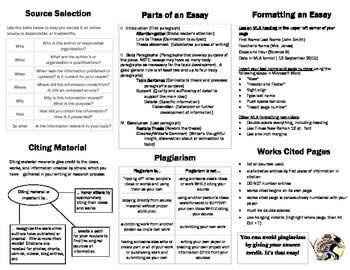A pamphlet is a short, informative piece of writing that is meant to persuade or educate its readers about a particular topic. Pamphlets can be used for a variety of purposes, such as promoting a cause, describing a product or service, or presenting a point of view. If you want to write a pamphlet, here are some tips to help you get started:
Choose a topic: The first step in writing a pamphlet is to choose a topic that you are knowledgeable about and that is relevant to your audience. It could be something you are passionate about, something you have expertise in, or something that you think needs more attention.
Define your purpose: What do you want your readers to do or think after reading your pamphlet? Do you want them to support a cause, learn about a new product, or understand a particular point of view? Having a clear purpose will help you focus your message and make it more effective.
Research your topic: Gather information from a variety of sources, such as books, articles, websites, and interviews with experts. Make sure you fact-check your information and only include reliable sources in your pamphlet.
Organize your information: Once you have collected your research, organize it into a logical structure that will be easy for your readers to follow. You might want to use headings, bullet points, and numbered lists to help break up the text and make it more visually appealing.
Write your introduction: Begin your pamphlet with an introduction that captures your readers' attention and gives them a sense of what your pamphlet is about. This could be a quote, a statistic, or a question that relates to your topic.
Present your information: Use clear, concise language to present your information in an engaging and persuasive way. Use examples, anecdotes, and other evidence to support your points.
Conclude your pamphlet: End your pamphlet with a conclusion that summarizes your main points and leaves your readers with a call to action. This could be asking them to support a cause, visit a website, or take some other action.
Edit and proofread: Before you print or distribute your pamphlet, make sure you have thoroughly edited and proofread it for grammar, spelling, and punctuation errors. You may want to ask someone else to read it over as well, to catch any mistakes you might have missed.
By following these tips, you can create an effective and persuasive pamphlet that will engage and educate your readers.
A pamphlet is a type of document that is designed to be concise and informative, and is often used as a means of propaganda or to promote a particular cause or viewpoint. If you are tasked with writing a pamphlet, there are a few key things to consider in order to effectively communicate your message.
First and foremost, it is important to determine the purpose of your pamphlet. What is the message you want to convey, and who is your target audience? Consider your audience's level of knowledge on the subject, as well as their values and beliefs. This will help you to tailor your language and arguments to effectively communicate your message.
Once you have a clear sense of your purpose and audience, it is time to start organizing your information. A pamphlet should be concise, so it is important to choose your words carefully and only include information that is essential to your message. Consider using bullet points or lists to make your points clearly and efficiently.
Next, consider the design of your pamphlet. A well-designed pamphlet can be more effective at communicating your message, as it will be more visually appealing and easier to read. Consider using images or graphics to illustrate your points and make your pamphlet more visually appealing.
It is also important to consider the tone of your pamphlet. Depending on your purpose and audience, you may want to use a more formal or persuasive tone. However, it is generally best to avoid using overly aggressive or confrontational language, as this can turn off your audience and hinder your message.
Finally, be sure to proofread and edit your pamphlet carefully. This will help to ensure that it is clear, concise, and free of errors.
In conclusion, writing a successful pamphlet requires careful planning and consideration. By determining your purpose and audience, organizing your information effectively, designing a visually appealing layout, and using a appropriate tone, you can effectively communicate your message and achieve your goals.








